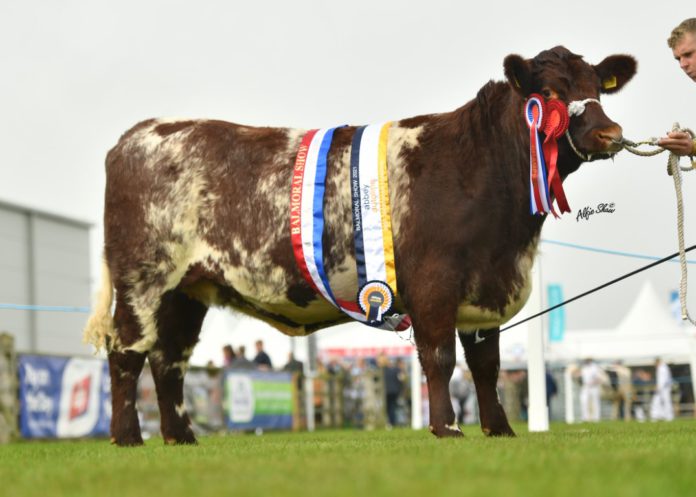Northern Ireland’s largest agricultural event, Balmoral Show, has increased BVD animal health status requirements for Northern Ireland herds for entry to this year’s event, which runs from May 10th to May 13th in partnership with Ulster Bank.
The Royal Ulster Agricultural Society’s (RUAS) move comes on the back of “progress” in BVD eradication and the “growing awareness” of animal health export requirements.
A spokesperson told That’s Farming:
“The RUAS are committed to being responsible event organisers with animal health at the forefront.”
“This protocol will give added reassurance to all cattle exhibitors and ensure Balmoral Show can be an inclusive event for exhibitors (ROI herds have these standards certified on entry through Intra Community Health Certification.)”
What are the requirements?
To satisfy the requirements of higher BVD health standards, the RUAS are requesting that Northern Ireland herd exhibitors can satisfy, by the date of Balmoral Show, that their herd meets the standards of a Low-Risk BVD herd.
This assessment will “provide assurance” to all exhibitors in respect of disease transmission, the spokesperson outlined in a statement.
The requirements for herd clearance are as follows:
- Within 30 days of the show, all animals within the herd must have a known BVD negative status, i.e., a status of BVDN or INDNEG. (Calves under 30 days of age are exempt);
- BVD inconclusive animals are not permitted.
- Any animal/s with the status BVDU (unknown) or no recorded status will need to be tested negative prior to the event.
- Note that imported animals may require testing if their BVD status cannot be validated;
- The herd must not have had any BVD-positive animals in the 18 months before the show.;
- If a BVD animal has been detected, the herd cannot achieve low-risk status until 18 months after the removal of this animal. As testing can take time, potential exhibitors are recommended to review their own herd status as “early as possible and to take remedial action as required”.
Check BVD status
Herd keepers who are unsure of the BVD status of animals within their herd can check this by requesting an up-to-date herd list from their local DAERA Direct office with BVD statuses shown.
This will allow you to check in advance if you need to have any animals BVD tested.
A report produced by DAERA will be provided to the herd keeper, and these will determine if the herd is eligible for entry to the Balmoral Show 2023.
If the herd is not eligible, it will “clearly define” the steps necessary to be taken to qualify for entry.
Eligible report
The spokesperson continued: “In nearly all cases, herds will be able to undertake additional testing to secure eligibility.”
“However, as this testing can take time, potential exhibitors are recommended to act as soon as possible.”
“When an eligible report is produced within 30 days of the date of the Balmoral Show, DAERA will date stamp and endorse this report and forward it to the official vet for the Winter Fair.”
“This will secure entry to the show along with normal criteria – that the herd is OTF, and the animal is not subject to any other restrictions.”
“DAERA will not be able to share the outcome of the report without the express permission of the herd keeper, so please remember to complete your GDPR permission,” the spokesperson concluded.





